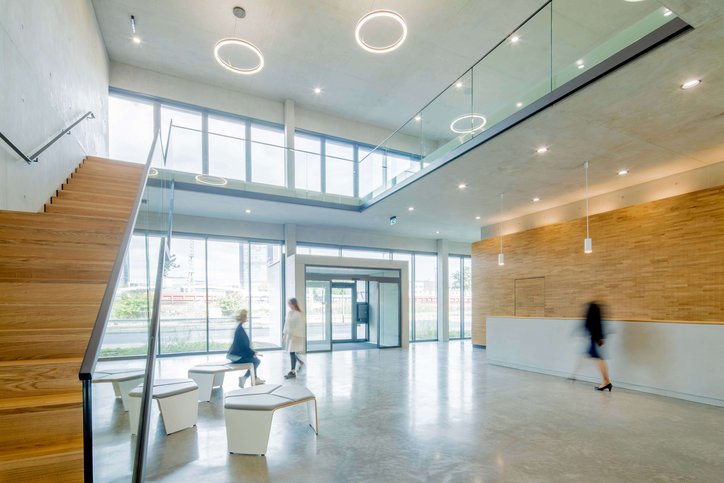05.10.2026
Training
Energy balances and efficiency
In this training you will learn how to conduct and evaluate cement kiln and mill trials. Kiln and mill examinations are carried out in order to gather data on the performance and to validate warranty performance data such as the output, the energy consumption, input/output ratio or the efficiency. Using this data as a reliable basis, you can for example optimise individual components of the operating system as well as the cement quality, reduce energy demands as well as emissions, evaluate material cycles and reduce coating formation.
Learn more
20.04.2026
Training
Firing alternative fuels 2026
In this training you will become familiar with all relevant aspects concerning the use of alternative fuels in cement plants. Starting with the main political drivers such as the circular economy and the European waste fuel strategy, you will get a detailed insight into the current state-of-the-art-situation with regard to the use of alternative fuels in the EU. In this context, pre-treatment and suitable quality control of alternative fuels will be also explained and presented to you. You will focus on all the relevant aspects of the use of alternative fuels in the burning process (e.g. drivers and barriers of their use, available process technology and latest developments) and discuss them in the sessions. You will acquire knowledge about technical feasibility and optimisation potential, and have the possibility to discuss case studies.
Learn more
01.04.2021
Research projects
Reduction of green house gases by process innovations in the primary Industry, SP 6: Development of a methodology for cross-project and ecological potential assessment, cement industry
The transfer and networking project ReInvent aims to provide technical and organisational support for the BMBF funding measure KlimPro-Industrie.
Learn more
01.10.2022
Research projects
CaLby2030 – Calcium Looping to capture CO2 from industrial processes by 2030
In CaLby2030, the deployment of Calcium Looping technology (CaL) using Circulating Fluidised Bed reactors (CFB) in the cement industry will be investigated, aiming at efficient CO₂-Capture without compromising clinker production or product quality. A technology scale-up will be also evaluated in a German cement plant by exploring different retrofit possibilities. Besides the cement sector, the deployment of CFB-CaL technology in other relevant sectors will also be investigated.
Learn more
16.03.2026
Training
Burning technology in cement production
Clinker production is the most energy-intensive process step in cement manufacturing. It can represent up to 90% of the total energy demand in a cement plant and is therefore a main focus not only with regard to cost optimisation and quality improvement of the final product, but also regarding emission control and the reduction of impacts on the environment. VDZ’s training will enable you as participant to obtain a deeper knowledge of the clinker production process and a better understanding of how the daily decisions can impact the overall performance of the plant (quality, electrical energy use, fuel consumption and emissions).
Learn more
02.03.2026
Training
Grinding technology in cement production
Raw material and cement grinding are the first and the last major process steps during cement production. The energy demand of these two processes amounts to up to ~70% of the electrical energy used in a cement plant. For you as participant, this training will help to obtain a better understanding of the comminution processes as well as the equipment used for grinding. The knowledge acquired in this online seminar will deliver a solid basis for assessing and evaluating the optimisation potential for grinding processes and the ground product.
Learn more
01.03.2024
Research projects
Investigation and optimisation of the dynamic operating characteristics of the oxyfuel-operated cement clinker burning process for CO₂ capture
The oxyfuel technology is to be investigated qualitatively using a dynamic process simulation. This will provide a basis for the control and optimization of oxyfuel systems, resulting in a faster rollout of this crucial technology for CO₂ reduction.
Learn more
01.07.2023
Research projects
Process engineering investigation of the energetic-material utilisation of wastes containing carbon fibres in cement plants - EVCAZ
In the AiF project EVCAZ, the energetic and material utilisation of wastes containing carbon fibres is to be demonstrated on an industrial scale in a cement plant. The central tasks are the evaluation of the conversion success of the CF fibres, the recording of the resulting emissions and the consideration of influences on the process and the clinker quality. The findings obtained are summarised to assess health and environmental risks and to answer questions relevant to approval as a decision-making aid for cement plant operators.
Learn more
01.01.2025
Training
VDZ E-learning
With us, you can expand your knowledge around the production of cement and lime, as well as in the area of concrete technology. As a competent partner, we have been offering our customers individual qualification solutions since 2010. In addition to German-language online courses, we also offer English- and Russian-language courses and other services.
Learn more
27.10.2025
Training
Crash course on cement production and use
The cement industry provides excellent job opportunities to start your professional carrier as an engineer or scientist. Our training schemes introduce you to cement production and use, so that you will be well prepared to get started in our industry. You will take part in a one-week intensive training course that will provide you with a basic knowledge of all the relevant aspects of clinker production and cement technology, including chemistry, mineralogy and environmental considerations. Quality assurance and cement performance in mortar and concrete are also addressed.
Learn more

